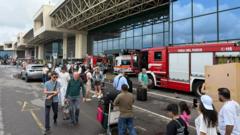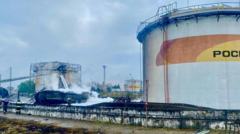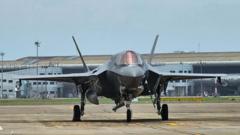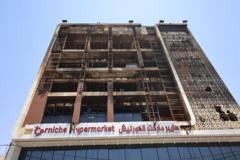The findings from the British government's report highlight critical infrastructure vulnerabilities within the airport's electrical system as over 1,000 flights were disrupted by a fire at a substation caused by deferred maintenance.
Heathrow Airport Shutdown Tied to Prolonged Maintenance Issues

Heathrow Airport Shutdown Tied to Prolonged Maintenance Issues
A recent investigation reveals that a significant electrical failure leading to Heathrow Airport's closure was due to neglected maintenance dating back years.
A recent report issued by British government regulators has concluded that the March shutdown of London’s Heathrow Airport stemmed from a fire at an electrical substation, which was triggered by a short circuit in a long-neglected transformer part. This incident not only closed one of the world's busiest airports for over 12 hours but also led to the disruption of more than 1,000 flights.
According to the 77-page report, issues concerning a bushing—an insulated conductor within the transformer—had been identified as early as 2018 but remained unresolved for nearly eight years. Despite multiple attempts to schedule necessary maintenance, the transformer, known as SGT3, received its last upkeep in July 2018 by National Grid Electricity Transmission, the operator of the substation.
As the investigation unfolded, it was previously stated by officials that the disruption was due to a massive fire, while ruling out terrorism or foul play. However, the newly revealed details of the fire’s origin have raised serious concerns about the airport's internal power systems. These were found to be inadequately designed to effectively utilize electricity from two other nearby substations that remained unaffected by the fire.
The closure prompted significant backlash from travelers, airline representatives, and some British political figures who called into question the resilience of the nation’s electrical grid. Prime Minister Keir Starmer expressed his deep concerns during the event, pointing to the necessity for thorough answers regarding the incident.
The report underscored that the airport’s internal electrical distribution system was ill-equipped to quickly adapt to such catastrophic power disruptions. The expectation that the broader electrical network would ensure stability led to a lack of preparedness for an event of this nature.
This incident serves as a stark reminder of the challenges facing critical infrastructure maintenance, and the ongoing dialogue about resilience and safety in high-demand facilities like Heathrow Airport continues.




















